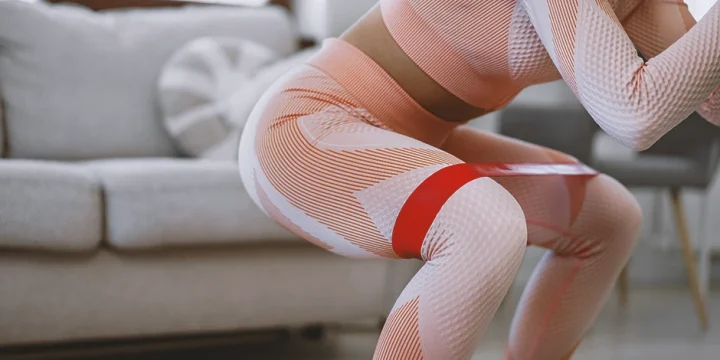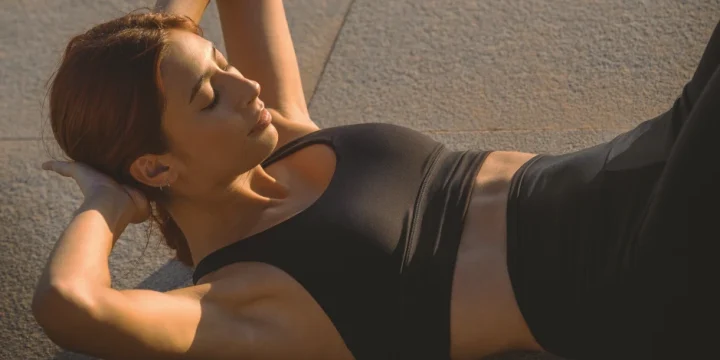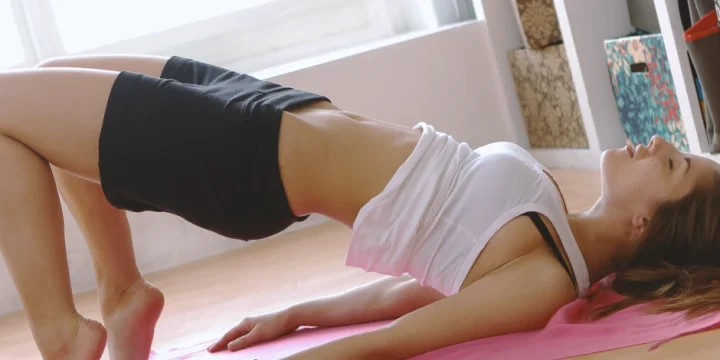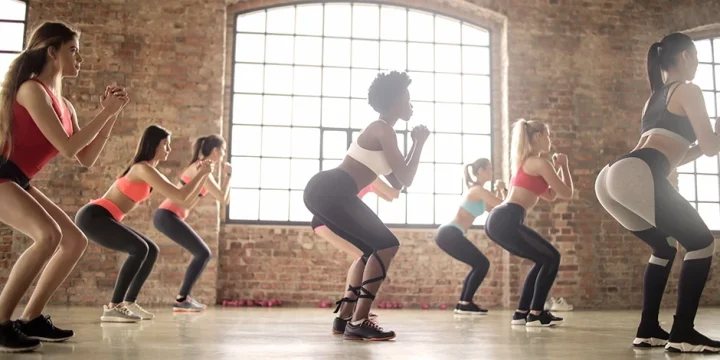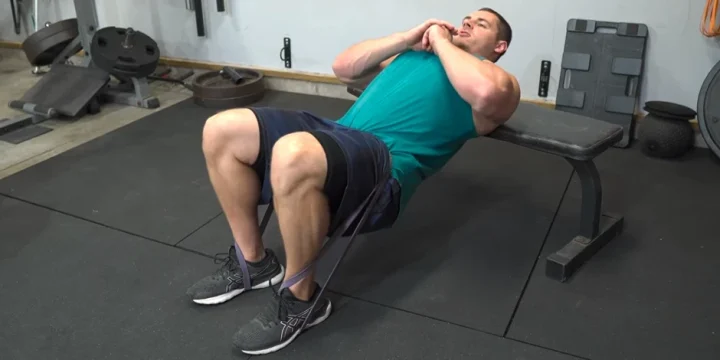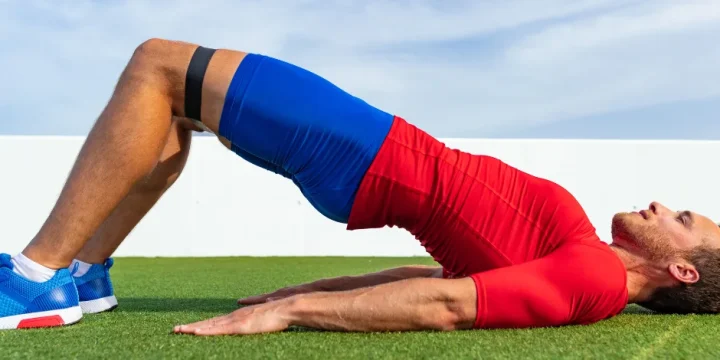As a trainer with over a decade of experience helping clients achieve their fitness goals, I can attest to the importance of building the glutes and hamstrings.
These muscle groups are essential for strength, athletic performance, and lower-body aesthetics.
I spent months reviewing clinical trials of various glute and hamstring exercises in search of the best ones.
In this article, I’ll share my list of these exercises, a workout split you can do, and some tips to maximize your gains.
Quick Summary
- The best exercises for your glutes and hamstrings include barbell hip thrusts, Bulgarian split squats, weighted step-ups, glute bridges, the Romanian deadlift, lying leg curls, Nordic hamstring curls, and Swiss-ball hamstring curls.
- Focusing on glute and hamstring training is essential not only for athletic performance but also for enhancing the lower body's symmetry and aesthetic appeal.
- The National Institute of Health (NIH) emphasizes the importance of progressive overload in exercise routines for steady strength gains and muscle hypertrophy.
- In my view, you can work your glute and hamstring muscles on the same day, but it’s better to have separate training days for both muscle groups.
Best Glute and Hamstring Workout Routine
Our list includes four exercises for each muscle group.
Best Exercises for the Glutes

Here’s our list of best exercises to target glutes and build a strong, bulletproof butt:
1. Barbell Hip Thrust
The hip thrust exercise targets the gluteus maximus and helps improve hip extension, which is essential for athletic performance.
Position yourself on a bench with your shoulders resting on it, your knees bent, and your feet hip-width apart and planted firmly.
Once in the starting position, hold a barbell across your hips and thrust them upward, squeezing your glutes at the top, before lowering back down in a straight line.
You can consider a popular hip thrust machine if you're not a fan of the barbell.
2. Bulgarian Split Squat
This exercise strengthens the glutes, hamstrings, and quadriceps while improving your balance and stability.
To do this exercise, place your left foot behind you on an elevated surface and your right foot forward.
Lower into a squat with the core tight, keeping the front knee behind the toes. Repeat for reps, and switch feet.
3. Weighted Step-Ups
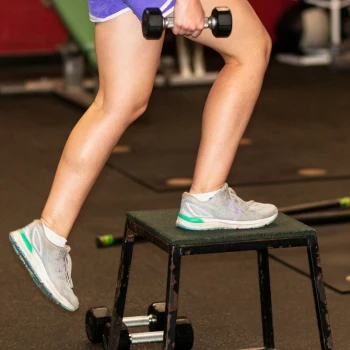
I ususally include weighted step-ups into my clients routines as a great way to target their glutes, hamstrings, and quads and enhance their lower body strength and power.
To do them, hold dumbbells in each hand, step up onto an elevated surface with the left foot, and then push through the heel to bring the right foot up.
Repeat for reps before switching to the right foot.
4. Glute Bridges
Glute bridges strengthen the glutes and hamstrings while improving hip mobility and lower back stability.
To do them, lie on your back in the starting position—knees bent and feet flat on the ground, shoulder-width apart.
Lift the hips, squeezing the glutes at the top, then lower back down.
Looking for more Glute and Hip Related Articles?
Best Exercises for the Hamstring

Here’s our list of best hamstring exercises for strength and mass:
1. Romanian Deadlift
This compound movement works your hamstrings, glutes, and lower back.
When doing this exercise, get into a standing position with your feet shoulder-width apart.
Maintain a slight bend in your knees and a neutral spine as you hinge at the hips and lower the barbell toward the ground.
You can also do a single-leg variation to target the right leg and left leg individually.
“[The Romanian deadlift] emphasizes hip extension and doesn't force you to get into a range of motion where you're actually putting your lumbar at risk.”
- Dr. Eric Helms, PhD, Strength & Conditioning Coach
2. Lying Leg Curl
Leg curls are an isolation exercise that directly targets the hamstring muscles.
Adjust the leg curl machine with the appropriate alignment and control the movement throughout the exercise.
You can also do these with your left and right legs individually.
3. Nordic Hamstring Curl
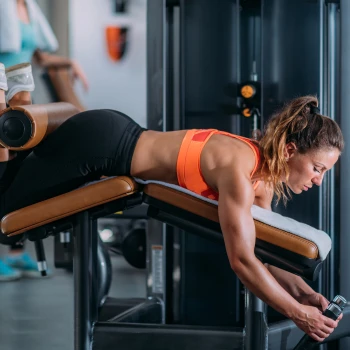
This advanced bodyweight exercise requires a workout buddy or an anchored setup to secure your feet.
Use your hamstrings to control the descent and ascent of your torso.
4. Swiss-Ball Hamstring Curl
This bodyweight exercise is perfect for beginners.
With your feet on a Swiss ball and your upper body anchored on the ground, lift your hips and curl the ball toward your glutes.
Engage your hamstrings throughout the movement.
Glute and Hamstring Workout Split

Here’s what a beginner workout split would look like:
- Monday: Leg workout. Include 1–2 hamstring isolation exercises (3 sets of 8–10 reps)
- Tuesday: Chest and triceps workout
- Wednesday: Active rest
- Thursday: Back and biceps workout. Toss in 1–2 glute exercises (3 sets of 8–10 reps)
- Friday: Shoulders
- Saturday: Active recovery or rest
- Sunday: Active recovery or rest
If you’re well into your fitness journey, a sample workout split for your glutes and hamstrings will look like this:
- Monday: Leg workout. Hamstring work will include 3–4 exercises (3 sets of 8–12 reps each)
- Tuesday: Chest and triceps
- Wednesday: Active rest
- Thursday: Shoulders and glute. Glute work will include 3–4 exercises (3 sets of 8–12 reps each)
- Friday: Back and biceps
- Saturday: Active recovery or rest
- Sunday: Active recovery or rest
Tips To Maximize Your Gains

Here are some friendly tips I always give to my clients to maximize their glute and hamstring strength:
- Form: Perfect form prevents injury and ensures maximum muscle engagement for maximum hypertrophy and strength gains.
- Progressive overload: According to the National Institute of Health (NIH), gradually increasing the weight, volume, or intensity of your exercises will help you make steady progress [1].
- Mind-muscle connection: Focus on the targeted muscles during each exercise to enhance their activation and growth. In our experience, this is especially true when doing glute isolation exercises.
- Supplements: Take high-quality protein supplements to enhance muscle recovery and achieve your fitness goals faster.
Safety Tips

Here are a few safety tips that I always tell my clients to keep in mind during their glute and hamstring routine:
- Warm-up: Begin your lifts with a dynamic warm-up to fire up your muscles and joints for the heavy loads. Avoid static stretches because, according to NIH, they can decrease your performance [2].
- Use a spotter: For heavy lifts or unfamiliar exercises, have a spotter ready to assist you with racking, assisted reps, and safety.
- Know your limits: It’s tempting to start heavy, but overloading the glutes and hamstrings can lead to serious injuries. Start very light (even if it means using only your body weight) and slowly progress to prevent injury and promote long-term progress.
- Stretch and cool down: As NIH notes, you should finish your workout with a cool-down and stretch to maintain flexibility and reduce muscle soreness [3].
Benefits of Training Your Hamstrings and Glutes
Training your hamstrings and glutes offers numerous benefits, which are essential for a well-rounded fitness routine. Here are five key advantages I've noticed in my years of experience:
- Enhanced lower lody strength: Targeting your hamstrings and glutes through exercises like squats, deadlifts, and lunges helps build significant lower body strength. This strength can improve your performance in various activities, such as lifting, running, and sports.
- Injury prevention: A strong posterior chain (hamstrings and glutes) contributes to better stability and reduces the risk of injuries, particularly in the lower back and knees. Strengthening these muscles can help maintain proper alignment and support during daily activities and workouts.
- Improved athletic performance: Strong hamstrings and glutes are crucial for athletic endeavors. Whether you're a sprinter, a soccer player, or a cyclist, well-developed hamstrings and glutes play a vital role in generating power, speed, and explosiveness.
- Enhanced posture and back health: Weak hamstrings and glutes can contribute to poor posture and lower back pain. Training these muscles helps improve your posture by providing the necessary support for your spine, which can alleviate discomfort and reduce the risk of chronic back issues.
- Aesthetic benefits: Building and toning your hamstrings and glutes can contribute to a more aesthetically pleasing physique. Well-defined glutes and hamstrings can help shape your lower body, providing a balanced and appealing appearance.
FAQs
Should I Train Glutes and Hamstrings Together?
Yes, you should ideally train the glutes and hamstrings together. Many of the best glute exercises, like deadlifts and hip thrusts, also work the hamstrings.
How Often Should I Train Glutes and Hamstrings?
You should train your glutes and hamstrings at least once a week. You can train them together or separately. But it’s always best to work your hamstrings with other leg muscles.
References:
- https://www.ncbi.nlm.nih.gov/pmc/articles/PMC6950543/
- https://pubmed.ncbi.nlm.nih.gov/22316148/
- https://www.ncbi.nlm.nih.gov/pmc/articles/PMC1250267/
About The Author
You May Also Like
